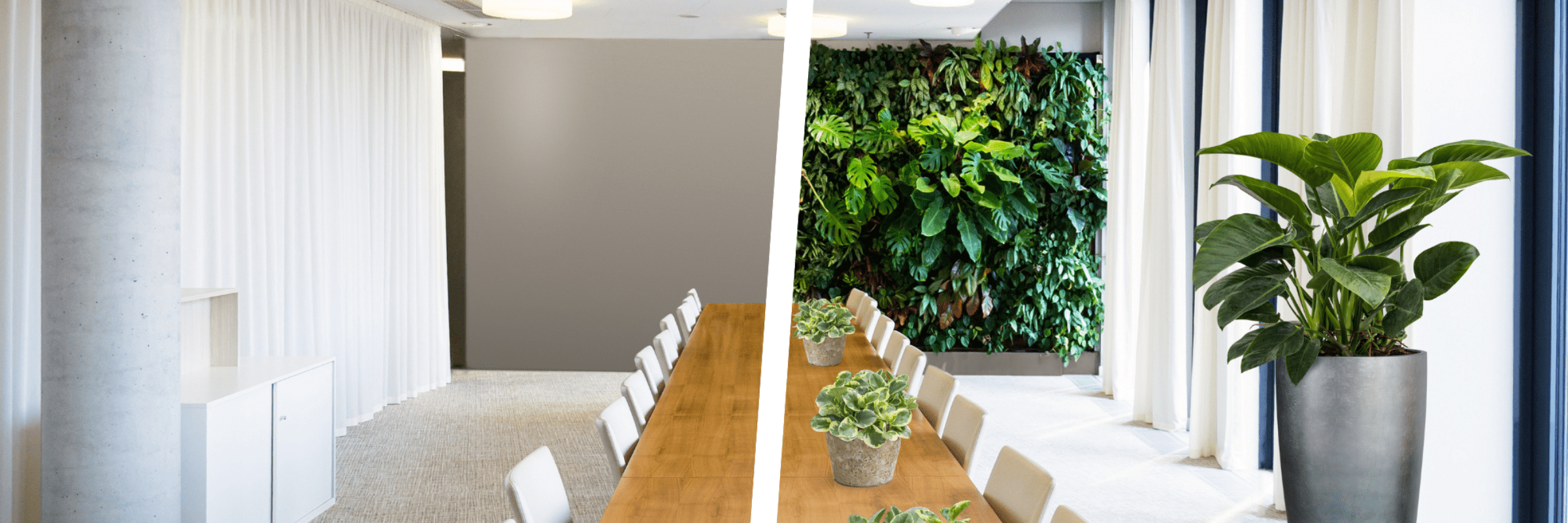The use of colour has an immense psychological impact on our everyday lives. From the colours we choose to wear, to the colours we use to decorate our homes; the range of hues surrounding us can influence our moods, emotions, and even our decision-making processes.
Of all the colours in the spectrum, there’s arguably none more universally loved than green. But what is it about the colour that is so appealing, and why is green perceived to be beneficial for our overall wellbeing?
We’re trichromats, meaning we perceive three kinds of colour: blue, green and red.

The retina in your eye can detect light between 400 and 700 nanometres, a range known as the visible spectrum. All of the other colours in the visible spectrum are made up of different combinations of these three colours. Blue light has the lowest wavelength at 400 nanometres, while red has the highest at 700 nanometres. In between those two extremes sits green, at around 555 nanometres.
Because of its position in the middle of this spectrum; green is the easiest of all colours to perceive and Ophthalmologists have even found the colour to be soothing to the visual analysers and calming to the nervous system.

These perceptions are rooted in our relationship with nature and its life-giving energy. Green is the colour of the grass, the trees, and the foliage in the natural world around us.
Spending time in nature can be a truly rejuvenating and restorative experience. It can help to improve our mental and physical wellness, as well as stimulating our creative thinking and problem-solving abilities. Additionally, the presence of natural elements like fresh air, water and plants can have a calming and grounding effect on us, helping us to better appreciate the beauty of the world around us. All these benefits combined can help us to feel renewed and more connected to the environment, leading to a sense of contentment and joy.
This connection with nature has helped us to form a strong bond with the colour green and made it a powerful communications tool for conveying messages of positivity, health, and environmental awareness.
Several studies have investigated the influence of green, but we were particularly impressed with the results of this survey carried out in Wisconsin which not only found a strong correlation between happiness and the availability of neighbourhood green space, but in this instance, it even outweighed the importance of socioeconomic status.
Unfortunately, opportunities to interact with nature have become increasingly rare due to rapid urbanization. According to the United Nations World Urbanization Report (2018), 55% of the world’s population currently live in urban areas compared to only 30% cent in 1950. This number is projected to keep growing and is predicted to rise to almost 70% by 2050.
While urbanization shows no sign of slowing down, there are still ways of incorporating greenery in our everyday lives by adapting our interior environments.
One of the easiest ways to incorporate green in interior design is through the use of plants. In the below example, we see how an office floorplan can be made instantly more appealing with the simple addition of greenery throughout the space. Our eyes are naturally drawn to the space containing plants because of our positive associations with the colour.

In interior design, plants can bring an array of benefits, such as:
• Enhancing concentration and productivity – Studies have shown that adding green elements in an office setting can lead to increased focus, productivity and creativity.
• Stimulating healing and relaxation – The soothing powers of green can help relax your mind and body, aiding in recovery from illness, stress and injury.
• Accenting other colours – Thanks to its versatility, green can be used to bring out the natural beauty of other colours. When used as an accent, green will draw attention to other colours around it.

Does your space need more greenery?
We’ve got you covered.
For over thirty years, we’ve worked with commercial interior designers to help bring their creative vision to life with plants and flowers for a variety of industries. We’re always up to date with the latest trends in plant and floral designs and have the accreditations you would expect of an exceptional supplier – ISO9001, ISO14001, ISO25001.